Mastering the Art of Selling Old Rings

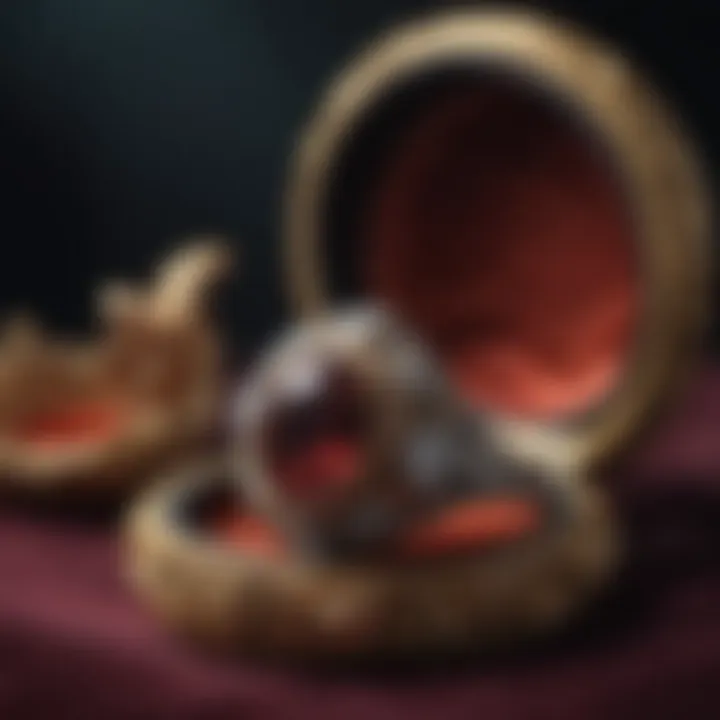
Intro
Selling old rings can be a maze, whether you’re parting with an inherited family heirloom or getting rid of an impulse buy. The dread of navigating this market looms large for many. Knowing who to trust and where to go may feel overwhelming, but fear not—this guide aims to shed light on all those touchy areas that often cloud judgment.
Before diving headfirst into the nitty-gritty of it all, it’s essential to understand that rings, especially those adorned with gemstones, are more than mere decorative pieces. They carry stories, sentiments, and in many instances, generations of memory. The process of selling these pieces touches not only on monetary gain but also on emotional closure and ethical considerations.
In the following sections, we’ll break down the complexities surrounding gemstone valuation, proper selling platforms, and crucially, the role that gemstone knowledge plays in sealing a deal. The stakes are high, after all, and it’s better to be armed with information than to venture forth uninformed. Knowledge is power, and when it comes to selling old rings, it’s also your best ally.
The journey begins with understanding the very heart of what you’re selling—the gemstones. So let’s roll up our sleeves and get into it.
Understanding the Value of Old Rings
When it comes to selling old rings, understanding their value is half the battle. This isn't just about knowing the numbers. It’s about peeling back the layers to uncover what makes an old ring truly special. Each ring carries its own story, and while you might just see a piece of jewelry, others might see a reflection of craftsmanship, sentimental memories, or rare materials. Grasping these elements helps sellers navigate the marketplace more effectively and can lead to a more satisfying sale.
Factors Influencing Value
Material Composition
Material composition plays a pivotal role in determining the valuation of old rings. The precious metals involved, such as gold, platinum, or silver, can vary greatly in terms of their market price. For example, a ring made of 18k gold packs more value than one crafted from 14k due to a higher gold content. Plus, rare alloys or unique finishes can add a special flair that appeals to collectors, often cited as an appealing feature by sellers.
The key characteristic here is purity, which is measured in karats. Higher karat gold means less alloy mixed in, giving a richer hue and a heavier weight, which can be beneficial choices for resale. There’s something alluring about the warmth of 22k gold or the luster of platinum that draws buyers in.
However, one must be careful. The market for metals fluctuates. If you're holding onto a ring during a dip in gold prices, you might find it hard to fetch a good price.
Gemstone Quality
Gemstone quality is another pivotal aspect that's intertwined with a ring’s overall value. Think of this aspect like a gold star in the academic world – the better the gemstone, the shinier the star. Factors such as cut, clarity, color, and carat weight, known as the Four Cs, dictate how desirable a stone can be. A top-quality diamond or an unblemished ruby could significantly elevate a ring's selling price.
The rarity of the gemstone in question is also a key characteristic. Stones like emerald and sapphire come in various grades, and finding a clean piece can be like finding a needle in a haystack, making it a sought-after choice in the market. Speaking of unique features, some gems have unique inclusions or color zoning that can set their value apart.
But beware; not all stones appreciate in value. It’s crucial to stay ahead of the trends before selling a ring, as some gemstones fall in and out of favor faster than a stock in a bear market.
Historical Significance
Historical significance often brings a unique charm to old rings, linking them to past eras or notable figures. A Victorian-era piece, for example, might be cherished not just for its aesthetic but also for what it represents from a bygone time. Collectors often pay top dollar for these connections, recognizing a ring as a slice of history.
This piece's key characteristic is its storytelling ability. Artifacts tied to cultural movements or specific historical events can boost desirability. However, with this, there can be a double-edged sword; a piece may hold immense historical value but may not always translate to high market value if the demand is low. Ensuring that you can convey the narrative behind the piece can be vital during negotiations.
Craftsmanship
Craftsmanship can set one ring apart from another, opening doors to a premium price. The intricacies involved in creating a ring — be it hand-forged details, intricate engravings, or even innovative designs — can speak volumes about its quality and desirability. High-quality craftsmanship reflects both skill and art, and that's what catches the eye of discerning buyers.
A hallmark of craftsmanship is a signature or mark from a recognized jeweler that can elevate value. Savvy shoppers often seek rings tied to renowned artisans, as their reputations can translate to higher prices. On the downside, if the craftsmanship is perceived as poor, even the most lavish materials can’t save a sale from sinking.
Emotional versus Market Value
Personal Sentiment
When selling old rings, personal sentiment can often clash with market value. It's not uncommon for a seller to have cherished memories attached to the ring, blurring the lines when setting a price. This emotional connection might lead one to value the ring more than the market dictates.
The ability to emotionally detach when it’s time to sell is a skill in itself, and it often proves to be beneficial in securing the right deal. However, it's a balancing act, because overestimating a ring's value could leave sellers with lingering regrets.
Market Trends
Market trends can dictate a ring's value far more than modern-day sentiment. Keeping an ear to the ground about which styles are trending or what kinds of gemstones are en vogue can be golden advice. Collectors today lean towards eco-friendly practices, so sustainable sourcing can also influence market dynamics.
Trends can fluctuate based on cultural influences, seasonal changes, and economic conditions. Thus, knowing when to sell can be as crucial as the quality of the item itself. Sellers who stay in tune with the market are those who often succeed in maximizing their returns.
Appraisal Process
An appraisal serves as a formal assessment, giving a clearer picture of a ring's worth. This process isn’t just about crunching numbers; it’s about distilling the essence of a ring into something quantifiable. Understanding the outcome of an appraisal can influence how a seller approaches potential buyers.
Carrying an appraisal certificate can signal professionalism and assure buyers about authenticity. However, the downside lies in potential discrepancies between appraised value and market price. If an appraisal considerably overstates value, you might find yourself in a frustrating negotiation.
Deciding to sell an old ring isn't merely a financial venture; it's a symphony of emotional and market-driven factors that come into play. By grasping the nuances involved in assessing the value of old rings, sellers are better positioned to make informed decisions and optimize their selling strategies.
Assessing Your Ring for Sale
When it comes to selling old rings, ensuring that you thoroughly assess your piece is crucial. This evaluation not only sheds light on its monetary worth but also enriches your understanding of what holds sentimental value. Recognizing the different aspects that contribute to a ring's price can steer you in the right direction when it comes to offloading your jewelry.
Professional Appraisal
Choosing an Appraiser
Choosing the right appraiser is a pivotal step in the assessment process. An expert appraiser holds the expertise to determine your ring’s value accurately. The key characteristic of a reputable appraiser is their credentials—look for certifications from recognized organizations. This choice often carries significant weight when you set an asking price, as buyers tend to trust documented evaluations more than casual estimations.
A unique feature of engaging an appraiser is their ability to provide an unbiased opinion. One of the advantages in this approach is that you can finally understand the full financial potential of your piece. However, engaging professional appraisers often comes with costs that may cut into your potential profits if you aren't careful.
Understanding Appraisal Reports
Understanding the nuances of appraisal reports is fundamental to navigating the selling process. A detailed appraisal report not only lists the financial value of your ring but also includes insights about materials used, craftsmanship, and historical context. This characteristic of the report helps buyers understand what they are getting, adding depth to the transaction.
What makes appraisal reports particularly beneficial is their structured format, which highlights key factors impacting value. The disadvantage, however, is that some reports can be overly technical, complicating what should be a straightforward process. For a potential seller, it’s vital to grasp this information to communicate effectively with prospective buyers.
Timing the Market
Timing the market can portray your ring in a favorable light. Factors affecting market trends include seasonal shifts, economic conditions, and prevailing trends among buyers. This area is where the element of strategy comes into play. A keen awareness of these timings can lead to a higher profit.
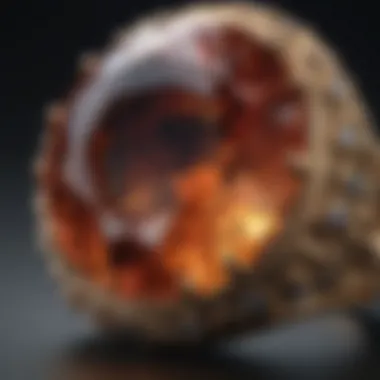
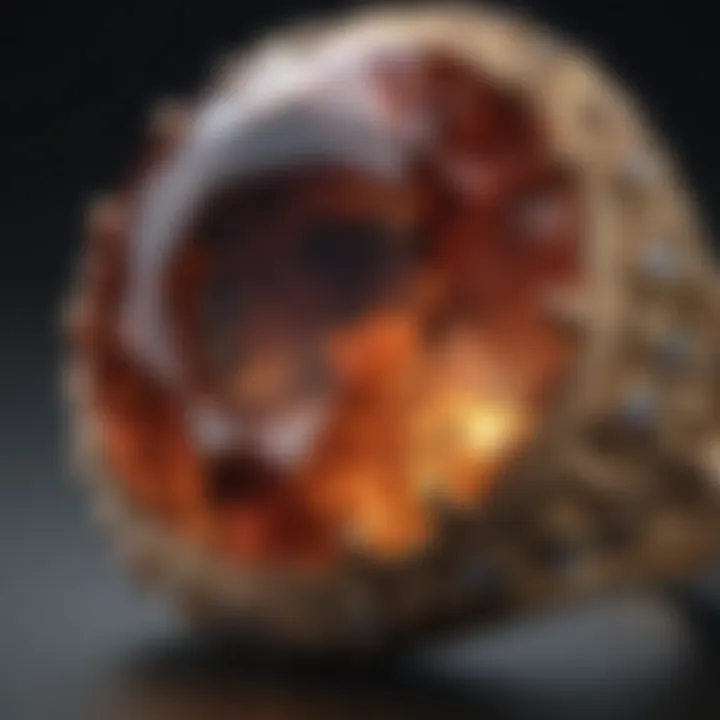
A notable point is that certain times of the year—like the holidays—tend to boost jewelry sales. However, waiting for the perfect moment can backfire, as trends shift quickly, and what’s hot today may cool off tomorrow. This element of unpredictability can be both an advantage and a disadvantage; a well-timed sale can maximize your return, but it can also lead to uncertainty if too much time is spent deliberating.
Self-Assessment Techniques
Researching Comparable Sales
Researching comparable sales is an essential step. By examining similar rings sold recently, you will have a clearer understanding of how your item stacks up in value. The key component here is using reliable platforms that host sales data, helping you gauge what buyers are willing to pay.
What makes this approach beneficial is the trend analysis it provides. Observing patterns in pricing can indicate whether you should price your ring above or below average. However, a possible downside is that local variances in demand don’t always translate well to broader markets, leading to potential mispricing.
Evaluating Condition
Evaluating the condition of your ring can have a huge impact on its perceived value. Factors like scratches, setting integrity, and overall wear can either enhance or detract from its worth. Sellers who take the time to assess these elements often find that they can command a higher price.
A noteworthy aspect of this step is its straightforward nature. Buyers appreciate transparency, and offering an honest assessment can quicken the sale process. On the flip side, if the evaluation reveals significant flaws, it might limit your selling potential unless you can justify those in terms of price.
Identifying Unique Features
Identifying the unique features of your ring is essential to marketing it effectively. Characteristics like distinctive settings, unusual gemstones, or historical provenance can significantly inflate its value. This step helps you articulate what sets your ring apart from countless others on the market.
The good thing about emphasizing unique features is that it can draw higher interest from niche buyers. Yet, one must be cautious, as not all unique attributes will resonate with the general market, potentially complicating the selling process.
Ultimately, taking the time to assess your ring well can orient you towards a successful sale, regardless of its intrinsic or sentimental value.
Exploring Selling Avenues
When it comes to getting fair value for old rings, exploring viable selling avenues becomes a crucial step. The right choice not only affects potential profit but also dictates the overall selling experience. As every seller's situation is unique, they may find differing degrees of success across various platforms and methods. The key here is to adapt strategies based on personal preferences, the condition of the ring, and market demands.
Online Platforms
Marketplaces (e.g., eBay, Etsy)
Marketplaces such as eBay and Etsy play an essential role in facilitating the sale of old jewelry. These platforms offer immense visibility, connecting sellers with a large audience interested in unique finds. What sets them apart is the user-friendly interface and extensive reach. Sellers can showcase their items through engaging listings.
One critical aspect of platforms like eBay is the auction-style feature. This allows sellers to start with a lower price and let buyers bid, potentially driving the price up. While it's a beneficial strategy, sellers must consider the listing fees that come with it, which can cut into profits.
Some advantages include:
- Access to a diverse audience.
- Simple listing process.
- Flexibility in pricing through auctions.
However, challenges may arise with concerning competition and fees, sometimes making it less lucrative.
Specialized Jewelry Websites
Specialized jewelry websites like Worthy and The RealReal cater exclusively to jewelry items. These platforms have detailed processes ensuring that rings get the attention they deserve from audience interested specifically in jewelry. Focusing on jewelry means these sites tend to attract buyers who understand value, enhancing the chances of a successful sale.
A key characteristic of these sites is their focus on authentication and quality, which builds trust among buyers. They often have more stringent conditions for sellers, but the trade-off can often lead to a smoother transaction process.
Advantages of using specialized websites include:
- Potential for higher selling prices due to targeted audience.
- Support in the selling process, including authenticating items.
On the flip side, sellers must grapple with higher commissions or fees, which can eat into the overall sale price.
Social Media Strategies
Using social media platforms each day provides sellers with creative options for showcasing their old rings. Platforms like Instagram and Facebook can be powerful allies in the selling game. These sites allow users to share high-quality images and even leverage hashtags for a broader reach.
The instant feedback from potential buyers can create a dynamic that is often absent in more traditional methods. Sellers can engage with a community that encompasses both buyers and gemstone enthusiasts, increasing transparency and building trust.
Some benefits to consider are:
- Ability to tailor marketing to specific audiences.
- Direct communication with potential buyers allows for negotiation.
While social media can be powerful, the downside includes managing inquiries and ensuring one's safety during transactions, which can add complexity to the process.
Local Options
Jewelry Stores
Local jewelry stores provide a personal touch that online platforms can lack. They often have established clientele who trust their expertise. A key characteristic here is immediacy; once a deal is made, sellers leave with cash in hand. Jewelry stores may offer appraisals and take time to explain the worth of the item.
Some aspects to highlight include:
- Trustworthiness and established relations.
- Instant payment, eliminating waiting times associated with online selling.
However, the drawback is that store owners often don’t pay as much as independent sales via online platforms. It’s a trade-off between convenience and maximizing return.
Consignment Shops
Consignment shops provide a unique angle as they allow sellers to retain ownership of their items until sold. The shop will display the jewelry and handle the sales while splitting proceeds. This model is beneficial for sellers who may want to set a higher price without the risk of their items not selling.
The main feature is the flexibility in pricing and the potential to attract diverse customers. Consignment shops usually have a loyal following.
However, sellers should keep in mind:
- Payments can take time since the shop will not pay until the item gets sold.
- Images and marketing typically depend on the shop’s style, which might not align with individual branding.
Jewelry Auctions
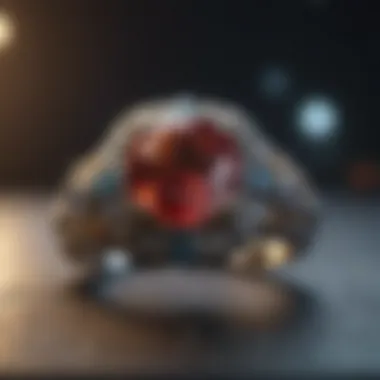
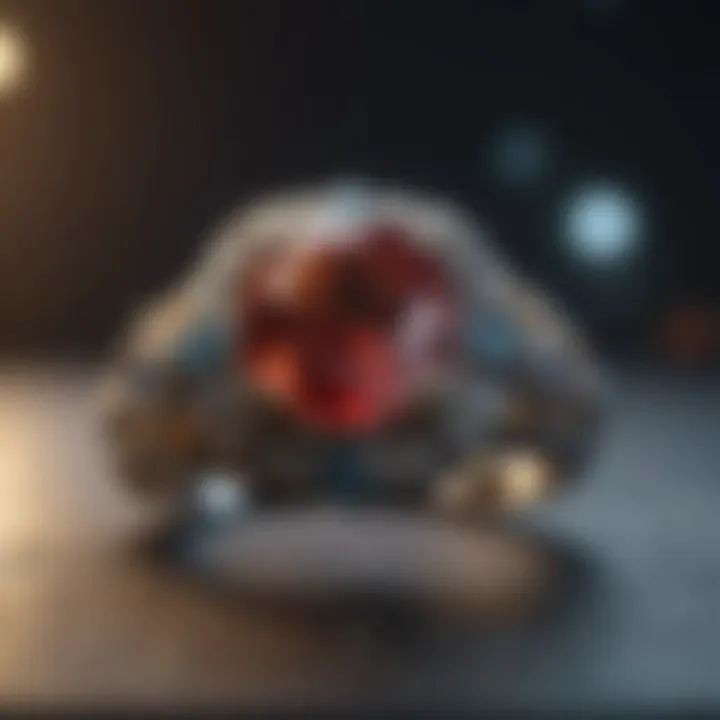
Jewelry auctions offer an exciting avenue that can potentially lead to high returns. Here, sellers can place valuable pieces in front of a receptive audience eager to bid. The auction format enhances competition. Many seasoned collectors are often present, driving prices higher during bidding wars.
A fascinating aspect is the event atmosphere, which can create urgency among bidders. The chance of a significant payout can make these auctions very attractive.
Nonetheless, it’s worth noting:
- Auction houses typically charge seller fees, which must be factored into profit calculations.
- The outcome can be unpredictable; there's no guarantee a piece will sell for its potential value.
In summary, balancing these options effectively can position sellers to maximize the return for their old rings. Each avenue presents its own set of pros and cons, allowing sellers to choose according to their needs and circumstances.
Ethical Considerations When Selling Jewelry
When venturing into the marketplace to sell old rings, ethical considerations shouldn’t just be an afterthought; they're crucial for maintaining integrity and trust within the jewelry trade. This section aims to highlight important elements that every seller should keep in mind. Being ethical means being transparent with buyers, ensuring that all facts about the jewelry are clearly expressed. This goes a long way in fostering positive relationships and a solid reputation.
Transparency in Selling
Transparency encompasses more than just honesty; it's about building a bond with potential buyers based on trust. By adhering to this principle, sellers not only enhance their credibility but also make the terms of the sale more straightforward.
Disclosing Enhancements
One specific aspect of transparency relates to disclosing enhancements made to gemstones. Many stones undergo treatment to improve their appearance, whether that’s through clarity enhancement or dyeing. Being forthcoming about these enhancements contributes significantly to the ethical fabric of the transaction. The key characteristic of disclosing enhancements is that it allows buyers to understand exactly what they are purchasing.
- Beneficial Choice: This practice builds trust. When sellers are open about what alterations their jewelry has undergone, it lays down a strong foundation for transactions.
- Unique Feature: By providing this information, sellers can differentiate themselves in a market peppered with ambiguity.
- Advantages: Buyers who know exactly what they are getting are likely to be more satisfied, leading to positive feedback and repeat business.
- Disadvantages: On the downside, if enhancements significantly detract from the overall worth, it might discourage potential buyers. However, reputable buyers appreciate honesty, which may outweigh possible drawbacks.
Providing Authenticity Certificates
Another vital aspect is the provision of authenticity certificates. This documentation serves as proof that the jewelry is genuine and meets certain standards. This not only provides reassurances to buyers but also boosts the seller's image.
- Beneficial Choice: Having an authentication backing validates the quality of the ring being sold, giving buyers added confidence in their purchase.
- Unique Feature: Authenticity certificates often highlight the specifics of the item, like its origin and quality assessment.
- Advantages: These documents can significantly increase trust and selling potential, as they serve as tangible evidence of authenticity and quality.
- Disadvantages: On the flip side, not all rings come with such certificates, and acquiring one can sometimes involve additional costs, which sellers might hesitate to bear.
Environmental Impact of Jewelry Sales
Besides consumer transparency, sellers must also be conscious of the environmental implications of their sales. The jewelry industry has a significant footprint, and being aware of sourcing methods can aid sellers in making ethical choices.
Responsible Sourcing
The importance of responsible sourcing cannot be overstated. This involves ensuring that the raw materials for the jewelry are procured ethically, considering both human rights and environmental standards. Responsible sourcing not only protects workers' rights but also helps minimize ecological degradation.
- Beneficial Choice: This approach reflects a commitment to ethical values and can appeal to environmentally conscious consumers.
- Unique Feature: By stating that their materials were sourced responsibly, sellers stand out in a crowded market and often cultivate a loyal customer base.
- Advantages: This can also avert negative publicity associated with unethical practices often linked to mining and extraction.
- Disadvantages: However, responsible sourcing may lead to higher costs, and thus, sellers might need to adjust their pricing strategy accordingly.
Sustainable Practices in Selling
Sustainability isn’t just a buzzword; it’s increasingly becoming a necessity in today's jewelry market. Implementing sustainable practices when selling old rings can align with the growing demand for eco-friendly products.
- Beneficial Choice: Consumers today seek brands that align with their ethical beliefs, making sustainability a sound strategy for attracting discerning buyers.
- Unique Feature: Sustainable practices include methods like recycling old materials and choosing eco-friendly packaging, all working toward reducing waste.
- Advantages: Sellers who incorporate sustainable practices into their business model not only contribute positively to the environment but may also command higher prices due to the perceived value of eco-friendliness.
- Disadvantages: Like responsible sourcing, these practices can involve higher prices for sustainable options, which might deter budget-conscious buyers.
Overall, ethical considerations in selling jewelry are not just moral responsibilities but strategic business practices that can enhance a seller's reputation and ultimately lead to greater success in the marketplace.
The Role of Gemstones in Rings
When it comes to selling old rings, understanding the role of gemstones is crucial. Gemstones aren't just decorative; they can significantly sway the overall value and appeal of a ring. In addition to the aesthetic qualities that draw buyers in, gemstones also carry deep cultural meanings, which can affect their desirability and market trends. Thus, a thorough knowledge of gemstones can provide sellers with a strategic edge in the market.
Types of Gemstones
Precious vs. Semi-Precious
The classification of gemstones into precious and semi-precious categories plays a pivotal role in valuing a ring. Generally, diamonds, rubies, sapphires, and emeralds are deemed precious stones, while gemstones such as amethyst, aquamarine, and topaz fall into the semi-precious category. The key characteristic that separates these is rarity; precious stones are typically harder to find, which enhances their market value.
For instance, a ring featuring a large diamond may fetch a higher price compared to a similar design with an amethyst. This distinction makes precious gemstones a popular choice among sellers aiming for maximized returns. However, semi-precious stones shouldn't be dismissed outright. They offer unique colors and characteristics that can appeal to specific buyers, sometimes resulting in unexpected demand fluctuations.
Cultural Significance of Gemstones
Alongside their physical properties, gemstones have a remarkable cultural significance that cannot be ignored. Historically, different stones have been imbued with various meanings, affecting their value in ways that aren't immediately obvious. For example, emeralds are often linked with rebirth and love, while sapphires symbolize loyalty. This emotional attachment can elevate demand, particularly for rings worn during significant life events.
Understanding the cultural stories tied to specific gemstones can offer sellers an avenue for crafting compelling narratives to market their rings. However, culturally significant stones may also have a niche appeal, which can limit selling channels if not marketed properly.
Gemstone Market Trends
Fluctuations in Value
The market for gemstones is not a steady river; rather, it ebbs and flows based on various factors. Economic changes, popularity shifts, and even the emergence of new jewelry trends can cause notable fluctuations in value. For instance, a gemstone might soar in value based on a sudden influx of popularity on social media.
Sellers need to stay aware of these fluctuations to price their rings accurately. Waiting for the right time to sell could mean the difference between a substantial gain or a disappointing loss.
Emerging Popular Gemstones
Besides traditional favorites, the market is seeing the rise of alternative gemstones like morganite, lab-grown diamonds, and even tourmaline. These stones are becoming popular due to their unique aesthetics and often lower price points. The unique feature of these emerging stones is that they often combine beauty with affordability, making them attractive to a broader audience.
However, the downside is that as these alternatives gain traction, the value of traditional precious stones might be pressured, leading to market saturation in some cases. Sellers should be savvy about emerging trends to ensure they can adapt their offerings.
Maximizing Your Sale's Potential
When it comes to selling old rings, how you approach the process can mean the difference between an average price and a top dollar offer. Knowing how to maximize your sale's potential is crucial. This involves developing effective pricing strategies and understanding how to present your jewelry in a manner that will attract buyers. A well-considered plan not only enhances the perceived value of your ring but also positions you for a favorable outcome.
Effective Pricing Strategies
Setting a Competitive Price
Setting a competitive price is more than just slapping a figure onto your ring. It's about analyzing the market, comparing similar items, and ensuring your price is appealing to potential buyers. The importance of choosing the right price can't be overstated; if your ring is priced too high, it could scare off interested buyers, while a too-low price might leave you feeling cheated.
- Research: It's essential to research current market trends for similar rings to gauge what prices have circulated recently. This will help you find that sweet spot.
- Condition Matters: The condition of the ring can impact pricing significantly. If it's in excellent condition, you may want to price it higher than a similar ring that shows wear and tear.
- Market Variance: Remember that markets can fluctuate. Seasons may affect how buyers perceive jewelry, making some times better for selling than others.


The unique feature of setting a competitive price is that it allows for negotiation, which is often part of the jewelry-selling process. Buyers appreciate it when they feel like they’re getting a deal, while you can still make a decent profit.
"A well-set price serves as an invitation, inviting buyers to step in, rather than a sign that hangs to keep them out."
Understanding Buyer Psychology
Buyer psychology plays a vital role in how the pricing is interpreted. Understanding what prompts a buyer to make a purchase can significantly boost your sell-through rate. Key aspects of buyer psychology that sellers should keep in mind include:
- Perceived Value: Buyers often equate the price they’re willing to pay with the value of the item. If they see a high price, they may think it's of higher quality.
- Scarcity Effect: Items perceived as rare or limited in availability can command a higher price, reflecting their desirability.
The unique aspect of understanding buyer psychology is the ability to tailor your sales pitch according to what might resonate more with prospective buyers, thus enhancing the chance of a sale. However, being too aggressive with pricing based on assumptions can backfire. Balancing your assessment with solid market research can make all the difference.
Presentation and Marketing
High-Quality Photography
In our digital age, visuals speak volumes. High-quality photography can substantially elevate how your ring is perceived. A sharp, well-lit photo not only showcases the ring's beauty but also conveys professionalism. A potential buyer's first impression often comes from how the ring is presented online.
- Natural Lighting: Using natural light can bring out details and colors that standard lighting fails to capture.
- Different Angles: Provide photographs from various angles to give buyers a comprehensive view of the item, paying close attention to unique features.
- Background: Set against a clean, neutral background, the ring stands out more, allowing its characteristics to shine without distractions.
A strong visual presence can create a compelling case for the ring’s value, encouraging buyers to take a closer look. In contrast, poor-quality images can lead to misunderstandings about the item’s quality and diminish interest.
Crafting a Compelling Description
Alongside great photography, a well-crafted description serves as another critical selling tool. It should detail not just the specifications of the ring but also weave in a narrative that can connect with potential buyers. Key characteristics of a compelling description include:
- Detail-Rich: Include specifics such as the materials used, size, and any notable gemstones.
- Storytelling: Share a brief background about the ring. Whether it’s heirloom quality or has stunning craftsmanship, a story can create an emotional connection.
- Calls to Action: Encourage potential buyers to act, such as highlighting that the item is one of a kind or that prices could fluctuate with market demand.
The unique feature here is the potential to transform an item from just another piece of jewelry into an object of desire, setting the stage for a successful sale. Nevertheless, too much emphasis on embellishment can raise skepticism, so balance is key.
Regulations and Legal Considerations
When diving into the process of selling old rings, understanding regulations and legal considerations is crucial. Every transaction might have implications that could affect your profits and your peace of mind. Ignoring the legalities can lead to a tangled web of issues, and it’s better to be informed rather than caught off guard.
Understanding Return Policies
Manufacturer Returns
Manufacturer returns often come into play when dealing with jewelry, especially when it's sourced from established brands. If a piece is originally from a well-known manufacturer, sometimes those makers offer the option of returns under certain conditions. This aspect is important because it allows sellers to reassure buyers about the authenticity and quality of the jewelry they are purchasing. A ring that carries a manufacturer's backing can resonate well with potential buyers.
A key characteristic of these returns is that they often come with specific stipulations, like needing to return the item within a certain timeframe or keeping it in unworn condition. This is beneficial for those wanting to maintain their reputation as trustworthy sellers. However, a potential downside is that navigating these return policies can sometimes be as tricky as threading a needle. Without clear understanding, sellers might find themselves in a bind, especially regarding timelines and conditions.
Resale Agreements
Resale agreements are other important aspects to consider, especially when working with consignment shops or jewelry stores. These agreements outline specifics, such as how long the shop will display your item, any fees they may charge, and how the profits will be split. Knowing these details upfront can save a lot of hassle later on.
What sets resale agreements apart is their generally straightforward nature. They provide a structured way to sell jewelry while protecting both seller and buyer. However, they also come with limitations. For example, if the shop undervalues your ring, it could mean less money in your pocket when it's sold. Balancing these agreements is key to ensuring both parties feel they've emerged in a favorable position.
Tax Implications of Jewelry Sales
The financial aspect of selling jewelry isn't only about how much you can pocket; it's also about what happens when governments want their share. Knowing the tax implications of your sales is equally important.
Sales Tax Considerations
Sales tax can often be an overlooked component of selling old rings. Depending on where you're located, you may be required to charge buyers a sales tax, thus adding another layer to your pricing strategy. This characteristic makes it beneficial to understand local laws so you don’t end up in hot water with tax collectors.
Understanding which sales apply and how to collect them can ensure a smoother transaction. However, keep in mind that navigating sales tax regulations can feel as complex as solving a Rubik’s Cube. If you miscalculate or miss a local requirement, it may lead to unforeseen complications.
Reporting Income
Reporting income accurately is non-negotiable when it comes to selling jewelry. Failing to declare your earnings can lead to serious legal repercussions that can overshadow any profit you may make. It's beneficial for sellers to maintain meticulous records of all transactions. This proactive approach can ease the process come tax season.
While keeping records of your jewelry sales may seem like just another chore, it ultimately empowers sellers. This unique feature not only keeps you compliant but also gives you clarity about your financial standing. However, it’s essential to approach this with a mindset that values precision; mistakes in reporting could lead to audits or penalties, which are as welcome as a mosquito at a picnic.
In summary, being aware of the regulations and legal considerations surrounding jewelry sales isn't just smart; it’s essential. Understanding everything from manufacturer returns to tax implications can set you in good stead, ensuring that your journey in selling old rings is both profitable and compliant.
Future Trends in Second-Hand Jewelry Sales
As we gaze into the crystal ball of jewelry commerce, it becomes clear that the market for second-hand pieces, particularly old rings, is on a trajectory of expansion. The appreciation of vintage and antique items is growing, driven by various factors including sustainability and technological advancements. These trends are pivotal for both sellers and buyers as they shape the dynamics and expectations in the marketplace.
Growth of the Circular Economy
Sustainability in Jewelry
Sustainability remains at the forefront of consumer consciousness these days. In the jewelry world, this means a shift toward more eco-friendly practices. When discussing sustainability in jewelry, one can’t overlook the importance of opting for recycled materials. By choosing to sell or buy second-hand jewelry, individuals are not only preserving beautiful pieces but also limiting the demand for newly mined materials which often comes at a significant environmental cost. This trend is particularly beneficial for the article as it highlights how reusing and upcycling rather than discarding items contribute positively to reducing our carbon footprint.
The unique feature of sustainability in jewelry is its dual advantage. On one hand, it appeals to eco-conscious consumers, while on the other, it allows for an aesthetic that combines history and modernity. As people increasingly seek their personal narratives within their possessions, second-hand jewelry offers a story rich in both craftsmanship and character. However, one potential disadvantage that cannot be overlooked is the skepticism surrounding the quality and authenticity of some recycled pieces, making it essential for sellers to provide transparency in their offerings.
Consumer Awareness
As the market evolves, consumer awareness about the origins and value of second-hand rings is skyrocketing. Today’s buyers are more informed and interested in where their jewelry comes from, which makes them more selective. This awareness amplifies the importance of trust in the selling process. Sellers are thus encouraged to provide not only descriptions of their pieces but also history and provenance when possible. This not only aids in selling but builds rapport with potential buyers.
The key characteristic of consumer awareness is that it drives demand for ethically sourced and environmentally friendly items. Common sense suggests that people will lean more toward products with a story that resonates with their values. The unique feature here is the potential for sellers who adapt to these demands to create a competitive edge in the market, yet a disadvantage lies in the fact that an unprepared seller may struggle if they don't possess adequate knowledge about their pieces’ backgrounds.
Technological Advancements
Blockchain in Provenance Tracking
In the digital age, technology is making its mark on how old rings are valued and traded. Particularly, blockchain technology is redefining provenance tracking. By securely recording the journey of a piece from creation to owner, it adds immense credibility to sales. This means buyers can feel confident that their purchase isn’t only exquisite but is also ethically sourced.
The main advantage of blockchain lies in its transparency. Each transaction is verifiable and nearly impossible to alter. This lends a sense of security to both sellers and buyers, knowing they can trace the history of a ring. However, one must note that not every seller is prepared to adopt such tech, which can become a barrier to entry for some.
Virtual Reality Showrooms
Imagine stepping into a virtual boutique where you can admire an array of captivating rings from your own living room. Virtual reality showrooms are becoming part of the jewelry selling landscape, offering an innovative method for browsing and experiencing jewelry without the constraints of physical space. This transition to virtual platforms provides convenience and the ability to showcase items in stunning detail, enhancing buyer confidence.
The key characteristic of virtual reality showrooms is their ability to simulate a tangible shopping experience. As technology makes it possible to try on a ring virtually, it speaks volumes to the shift in shopping behaviors among consumers today. One unique feature is the immersive experience these showrooms offer, which gives context to a piece’s beauty and craftsmanship. However, challenges persist, including the requirement for consumers to have access to appropriate technology and the potential feeling of disconnection that can come from a purely digital experience.
As the realm of second-hand jewelry evolves, understanding these trends is crucial for navigating the market effectively.
In summation, the future of second-hand jewelry sales holds promise, buoyed by a growing circular economy, heightened consumer awareness, and advancing technology. By paying heed to these shifts, not only can sellers maximize their returns, but they can also contribute to a more sustainable and ethical marketplace.



